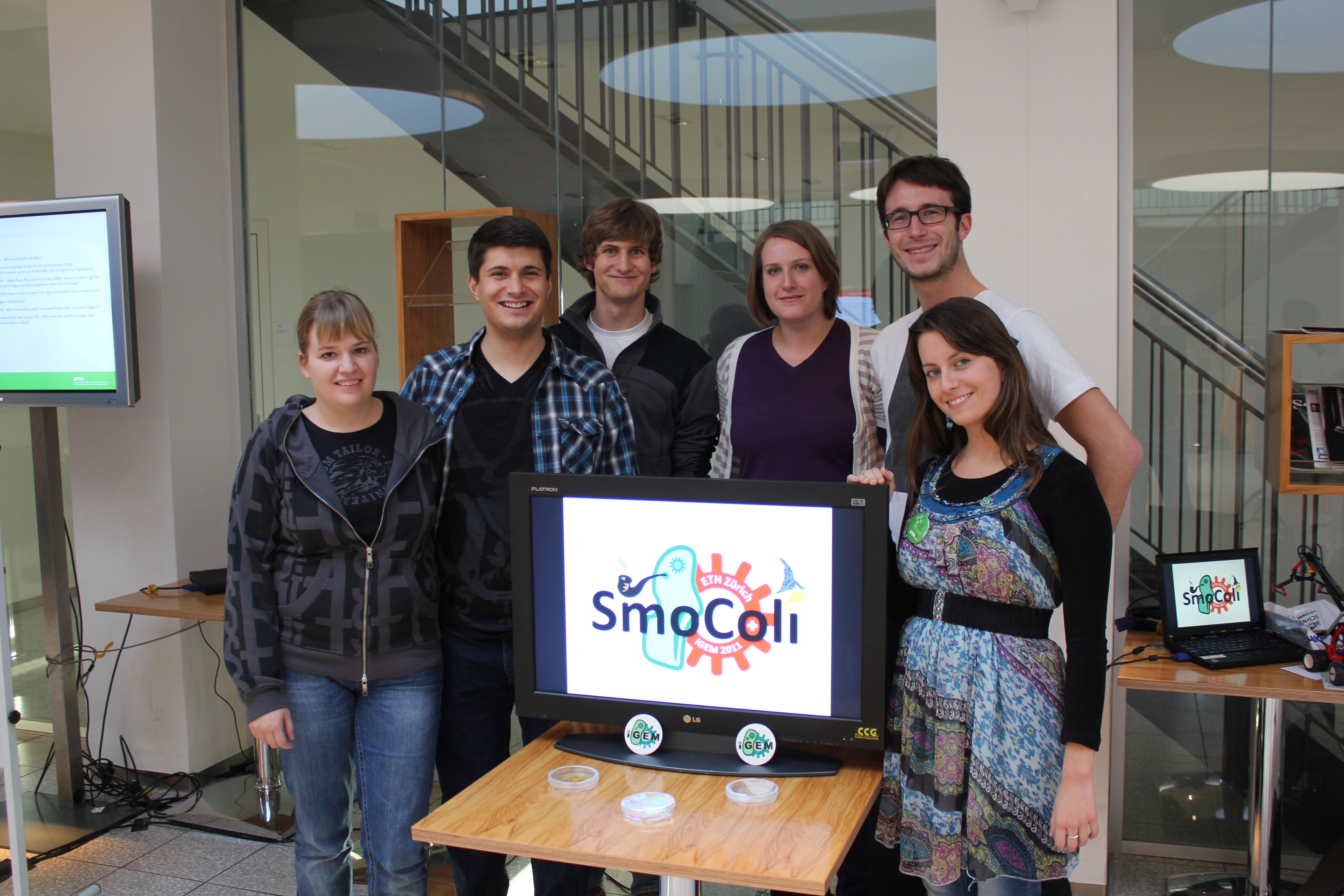Team:ETH Zurich
From 2011.igem.org
(Difference between revisions)
| Line 14: | Line 14: | ||
|style="font-size:2em; height: 30px" class="overview"|Abstract | |style="font-size:2em; height: 30px" class="overview"|Abstract | ||
|- | |- | ||
| - | |valign="top" style="height:100%"|'''SmoColi | + | |valign="top" style="height:100%"|'''SmoColi cells are engineered to sense toxic substances found in cigarette smoke. They are immobilized in a microfluidic channel, in which a concentration gradient of the toxic substance is established. The sensor is linked to a band-pass filter that leads to input-concentration-dependent GFP expression. Continuous increase of the input concentration and its detection, therefore, establishes a moving fluorescent band in the channel. Finally, if the input concentration exceeds a certain threshold, cells produce RFP and the device turns red.''' |
|} | |} | ||
|} | |} | ||
Revision as of 10:49, 17 October 2011
|
|
|
|
|
|
 "
"












